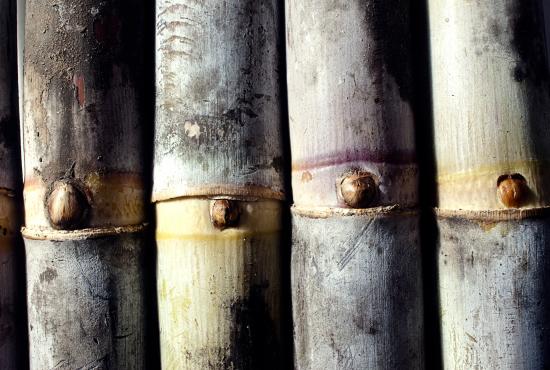

Data for all ethanol plants in Brazil will be analyzed (photo: Léo Ramos Chaves/Pesquisa FAPESP magazine)
The goal is to produce sustainable aviation fuel from sugarcane biomass and ethanol.
The goal is to produce sustainable aviation fuel from sugarcane biomass and ethanol.

Data for all ethanol plants in Brazil will be analyzed (photo: Léo Ramos Chaves/Pesquisa FAPESP magazine)
Agência FAPESP* – Researchers at the University of São Paulo (USP) in Brazil plan to estimate the sugar and ethanol industry’s potential to produce hydrogen (H2) by analyzing data from all ethanol plants across the country – 358 use sugarcane and 21 use corn, according to statistics updated to December 2022 – and calculating the amount of H2 these plants could produce for use in sustainable aviation fuel (SAF). The idea is to extract H2 both from the biomass left over after ethanol is produced and from the ethanol itself.
The research involves scientists in the Research Group on Bioenergy (GBio) at the Institute of Energy and Environment (IEE-USP) and the Research Center for Greenhouse Gas Innovation (RCGI), an Engineering Research Center (ERC) set up by Shell and FAPESP at the Engineering School (POLI-USP).
“Hydrogen is increasingly important to decarbonization in various sectors, including aviation. You currently hear a great deal about hydrogen produced by water electrolysis using solar or wind power, but there are also very competitive ways of producing it from biomass. H2 can be used to produce fertilizer, and bus and car fuel, as well as SAF,” said chemical engineer Suani Teixeira Coelho, a professor in USP’s Program of Graduate Studies in Energy and co-coordinator of the project alongside Marcos Buckeridge, a professor at the Institute of Biosciences (IB-USP) and principal investigator at the National Institute of Science and Technology (INCT) for Bioethanol.
According to a study led by the Roundtable on Sustainable Biomaterials (RSB), a global multistakeholder coalition based in Switzerland, in collaboration with Agroicone, a Brazilian NGO, 390 billion liters of aviation kerosene are produced per year worldwide and only 14 million liters of SAF. Substituting fossil fuels for low-carbon SAF would be the most efficient way to achieve the industry’s target of halving its greenhouse gas emissions by 2050.
“We’re going to look at existing plants in Brazil to see how much sugar and ethanol they produce, and how much biogas they could produce from byproducts of these processes. We’ll then use this data to estimate the amount of H2 that could be produced via different routes, especially ethanol and biogas reforming [rearranging molecules], and water electrolysis using local electricity surpluses,” Coelho said. “We’re starting now. This first stage will last about a year. If we can get extra funding, we’ll map other sources of biomass as well.”
The study is supported by USP via a broad sustainability program (USPSusten) and by INCT Bioethanol, which is funded by FAPESP and the National Council for Scientific and Technological Development (CNPq).
Scenarios
The study will involve different scenarios including demand for ethanol for road transportation and second-generation ethanol, considered sustainable because it is produced from sugarcane bagasse, which is typically discarded as waste.
“Whenever a biomass residue such as sugarcane bagasse is used to produce fuel or power, you get a more sustainable system. First, because an optimal use is found for the residue, and second because it averts the need to plant more energy crops. The concept pertains to what’s known as the circular economy,” Coelho said.
Brazil currently has only one 2G ethanol plant. It belongs to energy company Raízen and is located in Piracicaba, São Paulo state. The same state has two plants that produce biogas from sugarcane vinasse and filter cake, which are byproducts of the ethanol production process.
“These two projects– Raízen’s Bonfim plant in Guariba and Cocal’s plant in Narandiba – use biogas to produce electricity or upgrade it to biomethane for use as automotive fuel, but we can also reform it to produce hydrogen. This is where our scenarios come in. We can suppose, for example, that all sugar and ethanol producers will be interested in producing biogas and want to convert it to hydrogen,” Coelho said.
The study will use a database created by the researchers for another project conducted by RCGI to analyze the plants’ carbon capture potential, as well as data available from the portal NovaCana.
The technology for converting hydrogen into aviation fuel exists only at the laboratory scale. The researchers are closely watching its progress, as they see significant potential for use of hydrogen directly or as a precursor of other sustainable aviation fuels.
“We’ve also mapped the potential of biogas, biomethane and electricity, but this is a first for hydrogen on a large scale and for all the sugar and ethanol plants in Brazil,” Coelho said.
*With information from RCGI.
Republish
The Agency FAPESP licenses news via Creative Commons (CC-BY-NC-ND) so that they can be republished free of charge and in a simple way by other digital or printed vehicles. Agência FAPESP must be credited as the source of the content being republished and the name of the reporter (if any) must be attributed. Using the HMTL button below allows compliance with these rules, detailed in Digital Republishing Policy FAPESP.





